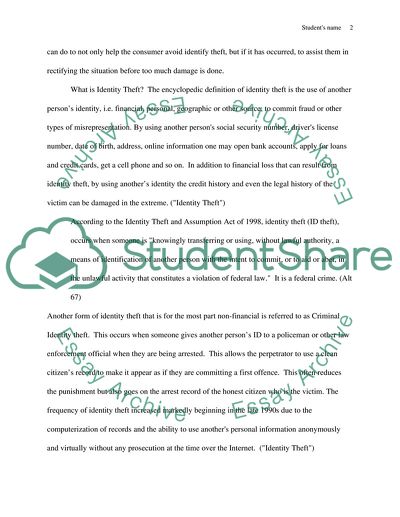Cite this document
(Identity Theft Essay Example | Topics and Well Written Essays - 4250 words, n.d.)
Identity Theft Essay Example | Topics and Well Written Essays - 4250 words. Retrieved from https://studentshare.org/law/1714946-identity-theft-impact-on-credit-card-use
Identity Theft Essay Example | Topics and Well Written Essays - 4250 words. Retrieved from https://studentshare.org/law/1714946-identity-theft-impact-on-credit-card-use
(Identity Theft Essay Example | Topics and Well Written Essays - 4250 Words)
Identity Theft Essay Example | Topics and Well Written Essays - 4250 Words. https://studentshare.org/law/1714946-identity-theft-impact-on-credit-card-use.
Identity Theft Essay Example | Topics and Well Written Essays - 4250 Words. https://studentshare.org/law/1714946-identity-theft-impact-on-credit-card-use.
“Identity Theft Essay Example | Topics and Well Written Essays - 4250 Words”, n.d. https://studentshare.org/law/1714946-identity-theft-impact-on-credit-card-use.


